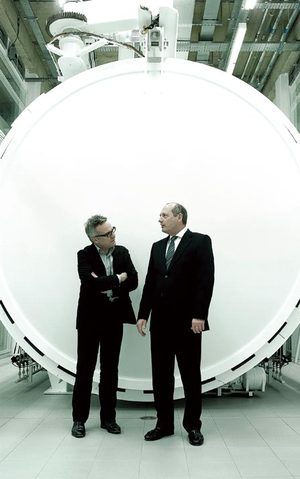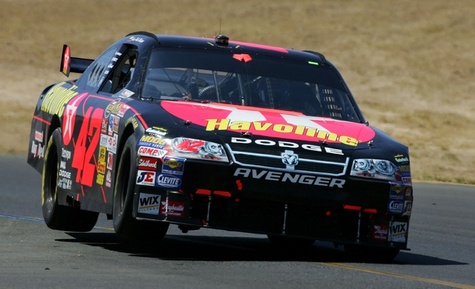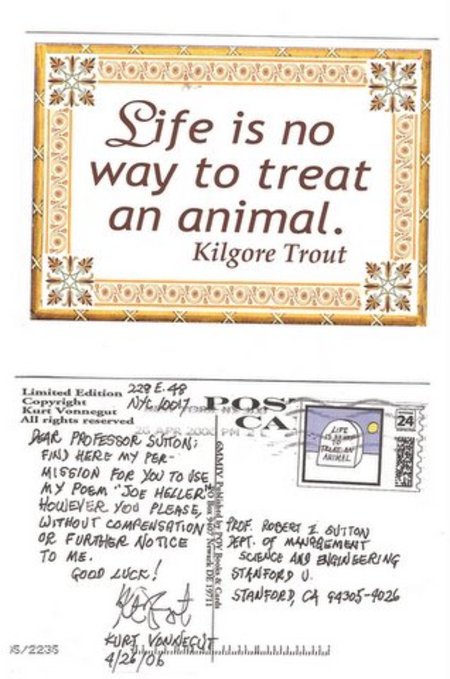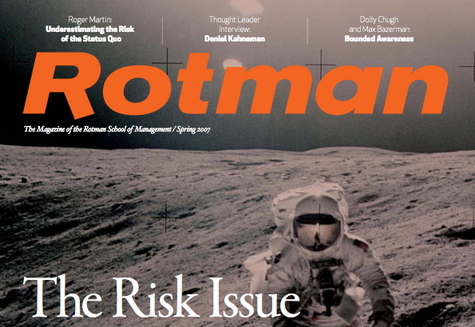"Doing the right thing is important, which is where strategy comes in.
But doing that thing well—execution—is what sets companies apart. After
all, every football play is designed to go for a huge gain. The reason
it doesn’t is because of execution—people drop balls, miss blocks, go
to the wrong place, and so forth. So, success depends on execution—on
the ability to get things done."
– Jeffrey Pfeffer
Category Archives: leading
A thought on teams and leadership and stuff
Teams that win do so because they are winning teams first. The emphasis should be on creating the winning team, not on the winning.
More Garage Majal…
My Garage Majal post touched a nerve. Had a great discussion in comments, and received some strongly worded emails. Thanks for those — I learned a lot from the feedback.
Brendan Eich of Mozilla wrote a post back in April called Open Source and "Openness", and it sheds some good light on the argument I was trying to make about "brilliant networks". Here’s a quote:
Successful open source projects combine meritocratic leadership,
"doing" more than "talking", and breadth through well-scoped extension
mechanisms. It’s not enough to do great work by oneself: each committer
who has the stamina and remains engaged must spend time listening to
users and developers, grooming helpers and successors, and refactoring
or even redesigning to support what becomes, module by module, a platform.
I think we’re entering a period where a new style of leadership — let’s call it web leadership — is emerging. Brilliant networks aren’t bereft of great leadership. Far from it. It’s just that the leadership style required in a network is something quite different from what we’re used to. Something to ponder over the next few weeks.
Innovation Lessons from Garage Majal
Here’s an interesting article about Ron Dennis, the leader of McLaren. That’s him on the right in the photo above, accompanied by the author of the article, semiotician Stephen Bayley. It’s a fascinating walk through the McLaren Technology Centre, which is where wickedly beautiful and effective machines like McLaren F1 racers and the Mercedes SLR are wrought.
One can’t read about Ron Dennis without thinking about Steve Jobs. Both have created high-performance organizations which are able to innovate on a routine basis. Both run organizations which are hierarchical and honest about it. As Dennis remarks to Bayley, "Dust can be eliminated," and I think that’s as much an organizational metaphor as a statement about the level of hygiene found at McLaren.
How does one organize for innovation? I’m beginning to think there’s a bimodal answer at work: either build an organization around an exceptionally "right" individual like Jobs or Dennis, and have every aspect of it amplify their personal decision making abilities, or build a powerful network of individuals, a la Mozilla, which determines what is "right" based on the power of thousands of individuals — some talented, some not so — making deep bugs shallow. In other words, brilliant dictator, or brilliant network. Between those reigns the mediocrity of committees and task forces and focus groups.
What do you think?
metacool Thought of the Day
"A week or so ago or 10 days ago
he was in Eldora in a dirt car. How many guys have been on the Eldora
dirt and been on the streets of Monte Carlo? That just tells you the guy has the disease. He has the fever. He
likes the action and that’s what’s fun about working with him. It’s not
about the money. It’s about the action and that’s what’s fun. It’s easy
to work hard for a guy like that.”
– Chip Ganassi on why Juan Pablo Montoya is a racer. And why it matters.
Encyclopedia of Life
Fantastic news involving E.O Wilson’s TEDPrize Wish.
Check out the Encyclopedia of Life, an exciting and hopefully impactful example of networked innovation.
His recent book The Creation is a powerful read.
metacool Thought of the Day
"After living in Silicon Valley so long, where there is so much greed,
and just about everyone seems focused on squeezing every cent of
everyone around them — employees, customers, suppliers — Zingerman’s
is a refreshing reminder that financial greed isn’t always the first
priority for every owner and manager. It reminds me of Kurt Vonnegut’s
poem Joe Heller…. Paul Saginaw and Ari Wienzweig seem to believe, like Joe Heller (the author of Catch 22)
did, that they have enough, and that using their talents to create
something beautiful and to give back along the way is a better thing
than maximizing their personal wealth at every turn."
– Bob Sutton
Embracing Risk
I have a new article about design thinking and risk in the Spring 2007 issue of Rotman Magazine (PDF download). It’s on page 57 of what is a quite impressive collection of articles — lots to chew on in there. Low risk, I assure you.
This one, as with Getting to Where You Want to Go, is a result of my continuing professional collaboration with Ryan Jacoby, one of my colleagues at IDEO.
As always, please let me know what you think with an email or a comment below.
update 28may07: I’m pleased to announce that this article can now be found over at BusinessWeek magazine
Creating Infectious Action through Social Enterprise
As part of the CIA-KGB class I’m teaching at Stanford this quarter, we’re holding a "mini-conference" next week on May 3, and you’re invited. We have some really amazing speakers, and we’ll be focused on how to created infectious action via social enterprise.
Here are event details.
It’s free, but bring your brain.
Director’s Commentary: James Nachtwey
Strictly speaking, 2007 TED Prize winner James Nachtwey isn’t a designer, and his acceptance speech video above isn’t a pure Director’s Commentary. But because it provides such a vivid and thoughtful perspective on his mode of leadership by storytelling, it’s especially relevant to any discussion around design thinking. Storytelling is one of the key pillars of design thinking, because it offers a way to communicate emotional content in a way that pure analytic thought and discourse cannot.
Compare the impact of any of his images to any statistics you’ve heard about the costs of starvation, genocide, and war. How might his approach change your own ways of communicating with others?




